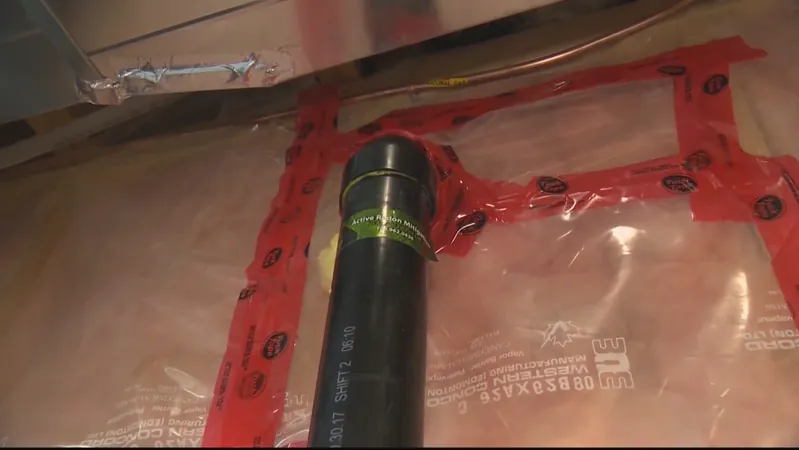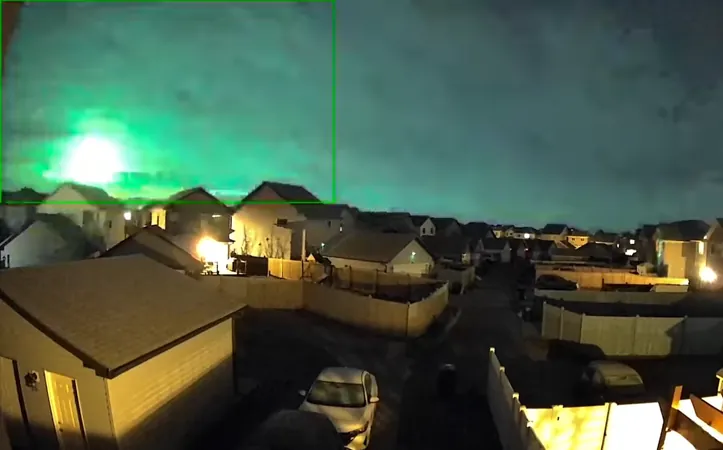
Radon: The Silent Killer of Non-Smokers in Canada—How to Protect Your Home
2024-11-10
Author: Olivia
Radon gas, a colorless and odorless substance emanating from the natural decay of uranium in the soil, has emerged as the primary cause of lung cancer among non-smokers in Canada. Shocking statistics reveal that nearly one in five Canadians inhabit homes with potentially dangerous radon levels. This November, recognized as Radon Action Month, health experts like Kristin Carroll from Health Canada are raising awareness and urging Canadians to test their homes.
The Alarming Impact of Radon
Each year, approximately 3,000 deaths in Canada are attributed to radon exposure, underscoring the importance of awareness and action. Many homeowners are unaware that this dangerous gas can seep into their living spaces through cracks in foundations, gaps in walls, and along pipes, creating a health hazard that often goes unnoticed.
How to Test Your Home for Radon
To determine if radon levels in your home are unsafe, experts recommend using long-term radon test kits. These kits can be conveniently ordered online from sources like takeactiononradon.ca and will be shipped to your door. All that’s required is to set the kit on a shelf in the lowest livable level of your home, such as a basement or family room. After a period of three months, simply return it to the laboratory for results.
Placement is Key
The placement of the radon test kit is crucial. Ideally, it should be on the lowest lived-in level of your home. If you often use your basement, place it there; if it remains unused, positioning the kit in your living room is still beneficial.
What to Do If High Radon Levels are Detected
Should your test reveal elevated radon levels, don’t panic. It's advisable to enlist a certified professional through the Canadian National Radon Proficiency Program. The most common remediation method is known as active soil depressurization, which involves drilling into the concrete slab of your home to create a venting point outside. This method typically requires around a day's work and can significantly reduce radon levels.
Built-in Solutions for Newer Homes
Excitingly, if your home was built in 2015 or later, it may already feature a rough-in for radon mitigation. While this pipeline remains capped and inactive, it can lead to a more cost-effective installation of a complete radon mitigation system if high levels are detected.
Managing Radon Levels
While you can't completely eliminate radon, the mitigation systems are approximately 90% effective in reducing harmful levels. According to Health Canada guidelines, the acceptable radon level is 200 becquerels per cubic meter. If tests show levels above this threshold, it’s vital to act promptly—installing mitigation systems within a year is strongly recommended. Conversely, if radon levels fall below this guideline, retesting every five to ten years, or after major renovations, is prudent.
Conclusion
With radon being a notable health risk lurking in many Canadian homes, taking simple steps to test and potentially mitigate its presence is crucial for safeguarding your health and that of your loved ones. Don’t wait until it’s too late—take charge now and protect your living space from this silent killer!









 Brasil (PT)
Brasil (PT)
 Canada (EN)
Canada (EN)
 Chile (ES)
Chile (ES)
 España (ES)
España (ES)
 France (FR)
France (FR)
 Hong Kong (EN)
Hong Kong (EN)
 Italia (IT)
Italia (IT)
 日本 (JA)
日本 (JA)
 Magyarország (HU)
Magyarország (HU)
 Norge (NO)
Norge (NO)
 Polska (PL)
Polska (PL)
 Schweiz (DE)
Schweiz (DE)
 Singapore (EN)
Singapore (EN)
 Sverige (SV)
Sverige (SV)
 Suomi (FI)
Suomi (FI)
 Türkiye (TR)
Türkiye (TR)